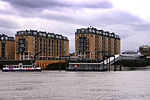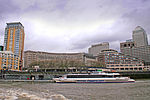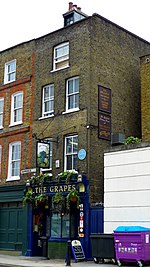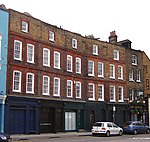Cuckold's Point

Cuckold's Point is part of a sharp bend on the River Thames on the Rotherhithe peninsula, south-east London, opposite the West India Docks and to the north of Columbia Wharf. The name comes from a post surmounted by a pair of horns that used to stand at the location, a symbol commemorating the starting point of the riotous Horn Fair, which can also symbolise a cuckold, a man whose wife had openly cheated on him. The Horn Fair was a procession which led to Charlton. It is said that King John, or another English monarch, gave the fair as a concession, along with all the land from the point to Charlton, to a miller whose wife he had seduced after a hunting trip, though this story is disputed.Cuckold's Point was also the location of a riverside gibbet, where the bodies of executed criminals (usually river pirates) were displayed as a deterrent to others, while it also gave its name to an adjacent shipyard during the 18th century. Cuckold's Point is near to Pageant Crescent, Rotherhithe and to Nelson's Pier, from which the Docklands Hilton has a ferry connection to Canary Wharf.
Excerpt from the Wikipedia article Cuckold's Point (License: CC BY-SA 3.0, Authors, Images).Cuckold's Point
Rotherhithe Street, London Rotherhithe (London Borough of Southwark)
Geographical coordinates (GPS) Address Website Nearby Places Show on map
Geographical coordinates (GPS)
| Latitude | Longitude |
|---|---|
| N 51.5046 ° | E -0.0329 ° |
Address
DoubleTree by Hilton Hotel London - Docklands Riverside
Rotherhithe Street 265A
SE16 5HW London, Rotherhithe (London Borough of Southwark)
England, United Kingdom
Open on Google Maps











